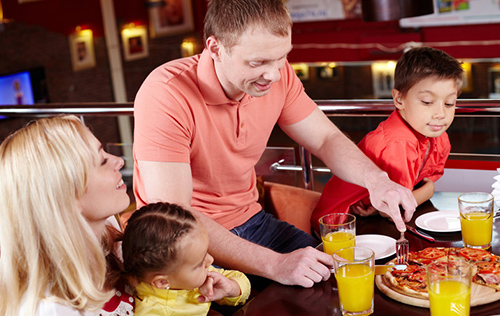
From the days before parenthood, it’s probably quite easy to recall a time you were out for a quiet dinner, and a table full of rowdy children next to you quickly ruined that hope. You were possibly left to wonder why those parents weren’t taking the right action, but you’ve come to realize in the years since how truly difficult that can be.
Managing children’s behavior in public is a timeless struggle for parents. Having a child throw a major temper tantrum or act out in a public place is a horrifying event that most parents experience at least once with their children. But let’s face it, you want to include them in outings when appropriate. It offers experience that helps kids grow into socially adjusted adults. The challenge in attaining this is requiring them to be well-behaved in oftentimes unfamiliar settings. How can you set your child, and yourself, up for success in these situations?
A good place to start is at home. Dwelling on poor behavior discourages everyone involved, so positive feedback several times a day is more effective all around (“I liked how nicely you played with your brother” or “You did a great job working on your art project”). This approach shows that you’re on the same team, and working together has better results, setting the stage to better carry out some recommended steps in guiding your child’s behavior while out in public. Consider the following elements:
1. Pre-game
Before heading to that restaurant or store, take a minute to discuss good choices and bad choices. Be specific and relay with confidence that you expect your kids, for example, to stay next to your cart and to use “inside voices.” Teach them and prep them every time, and if you’re lucky, that’s all the help they’ll need.
2. Understand what’s going on
It’s a scientific fact that children’s brains are not fully mature, including their frontal lobes, the part of the brain that helps control impulses and manage emotion. So, when they enter Target and are bombarded with lights, colors, people, loud noises, and rows upon rows of fun things to touch, of course they have more trouble managing their behavior than at home. Understanding this gives you more patience and more realistic expectations for your children, and the more patient you are, the better able you are to handle their behaviors.[1]
3. Preparation is everything
You can decrease a child’s social anxiety in public settings by being completely prepared. Be sure to bring snacks and juice boxes, offer opportunities to explore a bit when in an unfamiliar setting, and minimize the amount of time the child must spend in a crowded or confined area. Also, bring a favorite toy for a means of familiarity and comfort.
4. Game plan execution
Don’t be caught off guard and let a “quick trip” to the grocery store ruin your day. Establish a routine system for rewarding behavior in public. A good example is taking raffle tickets along on your excursion. Children earn a ticket each time you observe good behavior. If rewarded liberally, children love it and they spend the whole trip working to be good, and you escape without a crisis. There are lots of variations on this system that will work; the point is that you’re using positive reinforcement again, rather than spending the entire trip nagging them for bad behavior.
5. Always remember who’s boss
Kids learn ways to get what they want, and some learn that their parents get immobilized in public when they act up, which usually results in having a big fit until parents give in, in order to prevent utter public humiliation. Unfortunately, when that happens, the child is rewarded for having a fit in public, and it is more likely to happen again. Kids need to know the rules, and that they apply anywhere, so don’t be afraid to enforce consequences, even while in public.
A little preparation, a lot of positive reinforcement, and a solid plan can and will make a huge difference in encouraging your child’s good behavior in public. This will lead to outings becoming more of the norm, and less anxiety-inducing for the child, and you as well. There’s a good chance you’ll never have to be that parent receiving a glare from the restaurant guest at the neighboring table after all.
[1] http://arfamiliesfirst.com/managing-childrens-behavior-in-public/





